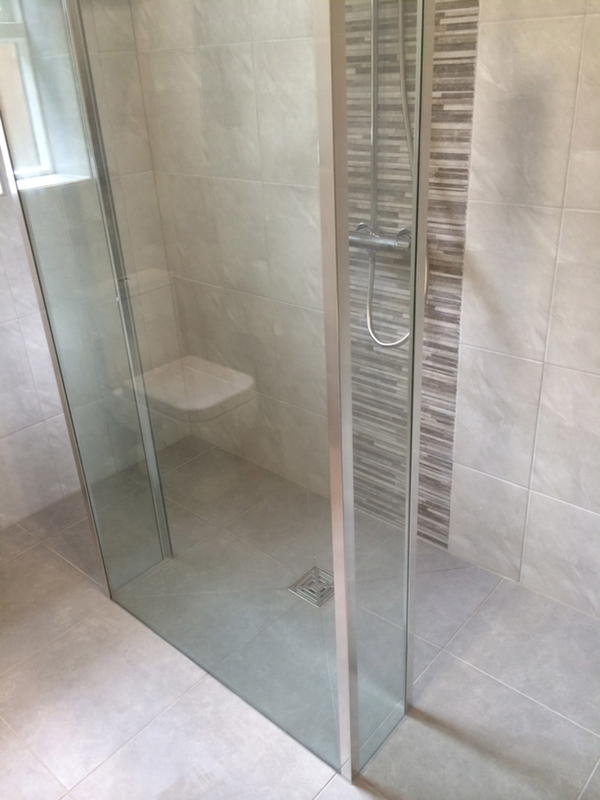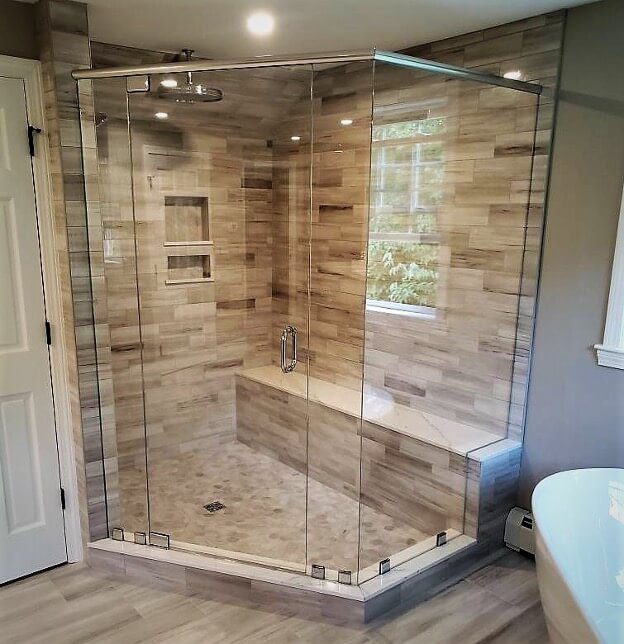Easy Installation Methods for a New Shower Unit
Easy Installation Methods for a New Shower Unit
Blog Article
Nearly everybody seems to have his or her own conception when it comes to Simple ways to Install a Shower Cubicle on Your Own.

An effective shower setup requires careful preparation and also a great deal of job. In most cases, you will certainly need to do 3 kinds of jobs: mounting walls, mounting the plumbing, and ending up wall surfaces.
Various Kinds Of Shower Units
Most Usual Errors
Prep work.
Firstly, you need to select the sort of shower that you wish to set up. It is essential to identify whether the selected shower can managing specific systems as well as can regulate a secure degree of water via the boiler. A lot of shower units nowadays are designed to be adaptable to different water stress (such as stored hot water and also cool mains).
It is additionally important to consider the water pressure as well as the planning of the piping and drain for the shower.
Method.
Depending on the type of shower you want to mount, the shower head have to either be fitted in order to avoid its contact with the water in the bathroom listed below or the base tray, or it needs to have a check valve.
Before beginning, it is recommended to mark the positions of the shower head and control, as well as to intend the pipe-work included. Furthermore, the drain system to eliminate the drainage will certainly require to be planned. Both settings of the cable route and also the shower switch will certainly additionally require to be considered if an instantaneous or electric shower unit is being set up.
Make use of the direction guide supplied with the shower device to fit the shower control.Before suitable the pipes that will provide the water to the shower system, it is important to cut off the water supply. In order to safeguard the pipelines, they should be given a water resistant covering and likewise fitted with isolating shutoffs. The pipelines can then be hidden right into the wall and smudged over to neaten the total appearance.
Fit the base tray, shower head, and also fittings.
Link the major shower control to the pipelines that will be providing the water (This might need a female screw string adapter).
Reconnect the water as well as test the pipes for any leaks, as some might require tightening up.
If you are installing an electrical shower, remember to switch off the electricity supply prior to making any kind of electric connections. Once these links have been made (there should be support within the instruction manual), the power supply can be switched over back on.
Adjusting Water Stress to Suit Your Shower.
The cold water storage tank can be raised to a higher height (in some cases as low as 150mm (6inches)) by installation a solid wooden support below it - possibly made up of struts and blockboards. If you choose this alternative, the primary and also distribution pipelines will likewise have to be elevated to satisfy the brand-new height of the tank.
Additionally, a booster pump (a solitary pump or a dual/twin pump) can be fitted. Whichever kind is picked, it has to be attached right into the power supply in order to run.
Piping and also Water drainage.
It is best to utilize 15mm diameter supply pipes, and make the runs to the shower as short as well as straight as possible so regarding maintain maximum stress as well as reduce warm loss. Additionally, by reducing using elbows for pipe corners, you can decrease the resistance in the circulation of the supply of water. You can accomplish this by flexing the pipes instead.
How Do You Install a Shower? Follow This Guide
Installing a Shower at a Glance
Tools & Materials: Level, electric drill, caulk, hole saw, cedar shims, shower unit Step 1: Drill pilot holes Step 2: Prep fixture holes Step 3: Move unit into place Step 4: Caulk corners and base Step 5: Attach door Step 6: Install shower pan Whenever plumbing is involved in a DIY project, people worry about what might go wrong. The truth is that installing a shower isn’t that complicated, and you can save a lot of money by doing it yourself. You shouldn’t need to make any alterations to your plumbing to complete the job, and most of the tools you need will be provided in your new shower kit.
Can I Install a Shower Myself?
Even if you’ve never installed a shower before, you’ll find this to be a project that is perfectly suited for DIYers with a moderate level of experience. Whether you're doing a bathtub conversion or installing a new stall, most of what you need comes in shower kits that you can purchase from a hardware store. The first thing you need to do is determine what type of shower stall you want.
Single-panel stalls are the easiest to install because they come preassembled. All you need to do is put them in place. Multi-panel showers require a few additional steps, but you’ve got more control over the appearance of your unit. Multi-panel units are also much easier to handle if you’re going to do the installation without any help.
Be sure to take all appropriate safety precautions, such as wearing eye protection and gloves. When you’re removing or installing a shower unit, you might kick up debris that could hurt your eyes. You’ll also need to work with equipment that will get extremely hot, so be sure to have safety gloves handy.
Tools and Materials
2- to 4-foot level Electric drill with a 1/8-inch drill bit Caulk 2-inch hole saw Cedar shims The unit itself Before You Begin: Prep the Space
It’s highly important to measure your space accurately before putting the stall in. Measuring from the floor upward and from each corner outward will ensure you’ve got the right measurements. What you’re looking for is where the plumbing apparatuses are going to come through the stall. Transfer these measurements over to the back of your unit by drawing the locations of these holes using a pencil or marker.
Pull out your old shower and make sure to scrape off all the old caulking. Be thorough because you want to work with smooth surfaces for the best installation. Once you’ve pulled out your existing shower, you need to make sure that the floor is clean and dry. The best way to clean debris is with a shop vacuum, as it’ll soak up water and dirt together.
If you’re experiencing any plumbing issues, such as low water pressure, this is a perfect opportunity to solve them. Make sure that the pipes themselves are not in need of patching and clean your showerhead. When you turn the water back on after your project, check the pipes for signs of wear or disrepair. Anything beyond minor repairs should be handled by a plumber, and this is the best time to bring in a professional.
If the floor has any moisture at all, don’t proceed until it’s completely dry. The last thing you need is for the floor to rot or invite mold and mildew into your base. Once everything is dry, apply waterproof wallboard to the walls. This can be attached with screws or nails, then sealed with caulk so that water doesn’t seep into any crevices.

Hopefully you enjoyed reading our piece on How to Install a Freestand. Thanks for spending some time to read our short article. Appreciated our piece of writing? Please share it. Let others locate it. Thanks for your time. Kindly stop by our website back soon.
Click Here Report this page